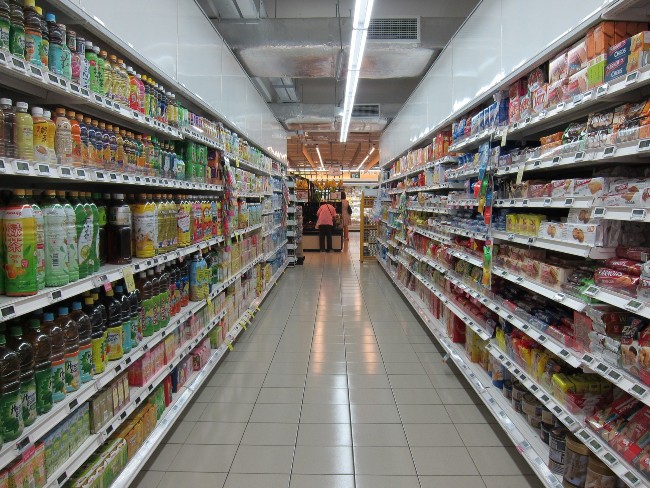Nutrition labelling helps individuals choose healthier foods

Front-Of-Pack (FOP) nutrition labels provide information on the energy, saturated fats, sugar and salt content of individual food products. In 2006, the UK Food Standards Agency (FSA) recommended retailers to introduce FOP nutrition labels on their products, focusing specifically on seven types of foods: ready meals, burgers / sausages, pies, breaded / coated meats, pizzas, sandwiches and cereal. This recommendation was taken up by several UK retailers.
About the research
Such nutrition labelling can play two roles in improving individuals’ food choices. First, they provide shoppers with more information on the nutritional value of their shopping baskets. Second, they may incentivise food manufactures to reformulate their products.
This study is the first to evaluate the impact of the introduction of FOP labels on households’ shopping baskets. We use data on all grocery purchases brought into the home between July 2005 and July 2008 by a rolling panel of households from Great Britain. To evaluate the impact of the introduction of nutrition labels, we compare changes in the quantity and healthiness of foods purchased by households who shop at retailers that introduced labelling, to changes purchased by households who shop elsewhere, before and after retailers introduced labelling. We measure the healthiness of the shopping basket using a Nutrient Profiling Score developed by the UK FSA. This score ranks foods according to their nutrient content, allowing us to compare the healthiness of foods that e.g. are high in fats and low in sugars to those that are low in fats and high in sugars. The findings show that households reduced the quantity of labelled foods that they purchased (for example, ready meals, pizzas, burgers, etc.), whilst simultaneously improving the healthiness of these foods.
This research comes as the UK government sets out its new obesity strategy in response to COVID-19 to help people make healthier choices. Our results can help inform future policies in this area.
Policy implications
• The government should extend front of pack labelling to a larger set of products. This will encourage individuals to make healther food choices and incentivize food manufacturers to reformulate their products, making them healthier.
• The government should support the extension of this policy to all food retailers, rather than being restricted to a subset of them as lower social classes benefit more from this policy compared to higher social classes.
• The Food Standards Agency should support a hybrid labelling system. The latter is a colourcoded scheme that denotes the nutritional content by the colours red (high), amber (medium) and green (low), whereas the former incorporates the colours into the Guideline Daily Amounts (GDAs), showing both colours and the contribution that each nutrient makes towards the adult GDA.

Key Findings
• We find that the introduction of FOP nutrition labels led households to reduce the total monthly energy, saturated fats, sugars and salt content of their total shopping basket by 0.1-0.9%.
• We find suggestive evidence that manufacturers reformulated their products at the same time as introducing Front-Of-Pack nutrition labelling, improving the healthiness of labelled foods.
• Our findings suggest larger improvements in the shopping baskets of lower social class households. Since the lower social classes on average have worse health and higher obesity rates, this may in the longer run reduce inequalities in dietary intakes and health outcomes.
• We compare the effectiveness of two types of food labels: Traffic Lights and a hybrid system that incorporates Traffic Lights into Guideline Daily Amounts. Our analysis shows that the hybrid system is most effective at encouraging
individuals to make healthier choices. Consumers who were exposed to Traffic Lights did not change quantity or nutritional quality of their shopping baskets.
Authors
Professor Stephanie von Hinke (University of Bristol), Dr Eleonora Fichera (University of Bath)
Further information
The full paper “The response to nutritional labels: Evidence from a quasi-experiment” is published in the Journal of
Health Economics and available open access.
Researchers acknowledge funding from the UK Medical Research Council (MR/K021583/1 and G1002345), the Rank
Prize Funds New Investigator Award (von Hinke), and the European Research Council (ERC) under ERC-2009-AdG grant
agreement number 249529.
Government open consultation on Front-of-pack nutrition labelling in the UK, July 2020
UK Government obesity strategy: Tackling obesity: empowering adults and children to live healthier lives, July 2020
Policy Briefing 94: Nov 2020
Nutrition labelling helps individuals choose healthier foods (PDF, 659kB)
Contact the researchers


